Recipients of the 2023 ZEKE Awards
SDN is proud to announce the winners of the 2023 ZEKE Awards.
ZEKE Award for Systemic Change
SDN is partnering again with the Foundation for Systemic Change for the second year. SDN awards one photographer the ZEKE Award for Systemic Change to recognize their outstanding visual stories documenting systemic changes leading to sustainable solutions to important issues affecting the world today.
ZEKE Award for Documentary Photography
SDN awards one photographer the ZEKE Award for Documentary Photography to recognize their success in documentary photography and visual storytelling with an emphasis on themes that affect the global community.
All ZEKE Award recipients will be exhibited in the SDN/ZEKE exhibition at Photoville this June in Brooklyn and featured in the spring issue of ZEKE magazine.
First Place: ZEKE Award for Systemic Change
Nicola Ókin Frioli
Piatsaw: A Document on the Resistance of the Native Peoples of Ecuadorian Amazon Against Extractivism
Ecuador
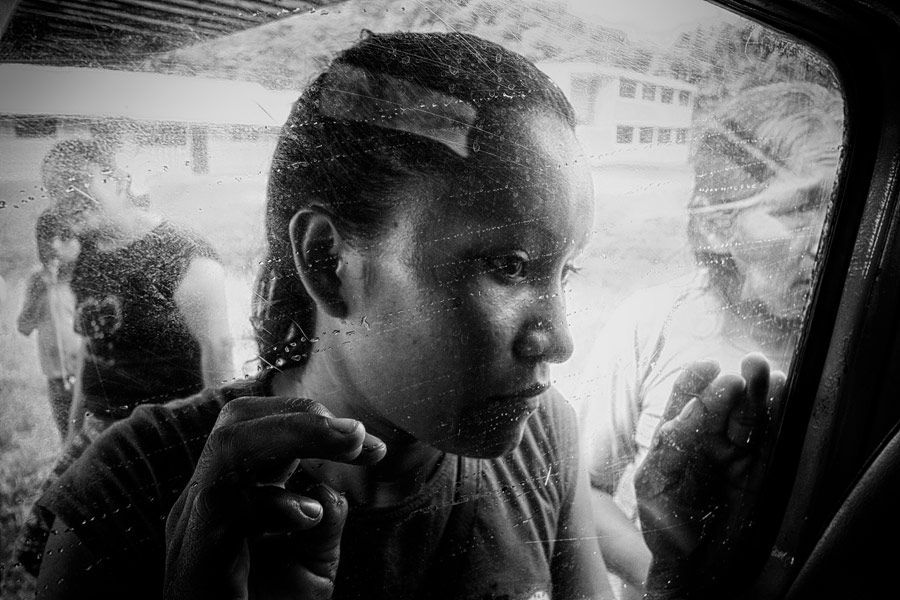
A woman of the Sapara people looks through the window of a small plane that has just landed in the Morete community, on the Kichwa territory of the Ecuadorian Amazon.
Piatsaw was the first man, and God, of the Sapara mythology who prophesied the end of the culture of his people.
This photo-documentary tells the story of the resistance that the Indigenous people of the Ecuadorian Amazon have waged against extractive companies that threaten their territories through continuous concessions and contamination caused by the oil company Texaco, during its presence in the country. In 1964, Texaco (now Chevron), arrived in Ecuador with a concession of 1.5 million hectares in the provinces of Sucumbíos and Orellana. At that time, they were extracting oil from the 450,000 hectares in their ownership. The oil giant admitted in court to having dumped 19 billion gallons of crude oil and harmful chemicals directly into unlined rivers and pools in a particularly biodiverse region of the Ecuadorian rainforest over decades. The inhabitants of the region suffered the consequences of extraction, their health and future were affected by contaminants present in the soil and groundwater, quantities exceeding permissible levels in Ecuador.
Following the events that indelibly marked the future of many families, the native peoples of the Ecuadorian Amazon, threatened by the continuous concessions to companies for extractive activities, applied different defense methodologies against mining, oil companies and the government. Armed confrontations, national strikes and their presence in the courts were the strategies that the Indigenous nationalities used to stop the loss and destruction of their territories as they consider their environment part of their body and plants and animals are the other members of their society.
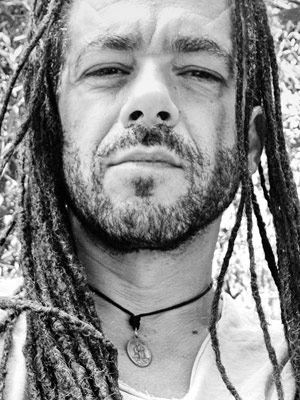 Nicola Ókin Frioli is an Italian freelance photographer. He graduated in fine arts and worked for 20 years in documentary photography and advertising campaigns. In these 20 years, he has traveled mainly in Mexico and the Ecuadorian Amazon. He has lived in Mexico for the past 15 years with his two dogs. His work has been published in magazines such as Washington Post, Time Magazine, The Guardian, Stern, El País Semanal, Geo, GUP, British Journal of Photography among others.
Nicola Ókin Frioli is an Italian freelance photographer. He graduated in fine arts and worked for 20 years in documentary photography and advertising campaigns. In these 20 years, he has traveled mainly in Mexico and the Ecuadorian Amazon. He has lived in Mexico for the past 15 years with his two dogs. His work has been published in magazines such as Washington Post, Time Magazine, The Guardian, Stern, El País Semanal, Geo, GUP, British Journal of Photography among others.
First Place: ZEKE Award for Documentary Photography
Cinzia Canneri
Women’s Body as a Battlefield
Ethiopia
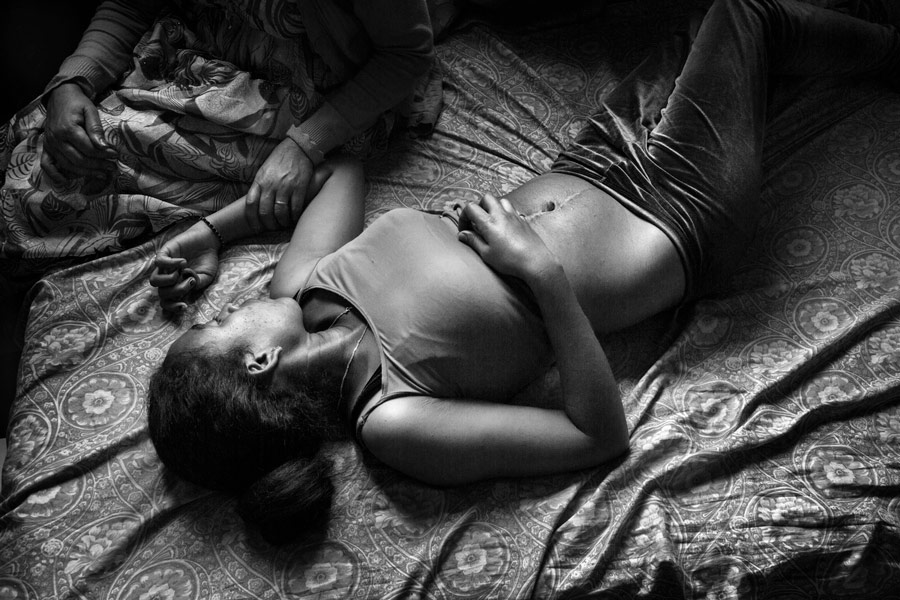
Addis Ababa, Ethiopia. October 31, 2017. Yohanna (22) lies next to her mother after having a kidney removed following being shot in her abdomen at the border in Shambuko , Eritrea.
The targeting of women’s bodies in times of war, but also in times of peace, has come to light as a systematic strategy that has been used by different actors in many different contexts worldwide. This project has analyzed the condition of Eritrean and Tigrinya women who moved across the borders of three countries geopolitically linked to one another: Eritrea, Ethiopia and Sudan. From 2017 to 2019, the work has documented Eritrean women fleeing from one of the most repressive regimes in the world and seeking refuge in Ethiopia. From November 2020, following the invasion of Tigray (Ethiopia) by the Ethiopian Federal Army supported by the Eritrean military forces and Amhara militia, the project’s focus has broadened to include also the Tigrinya women, who joined Eritrean women in their escape from Ethiopia to Sudan. In Tigray, the Eritrean army used sexual violence as a weapon of war against both Eritrean and Tigrinya women: to punish those fleeing their country in the former case, and as an act of extermination in the latter. The body of women became a battlefield on which there are no sides.
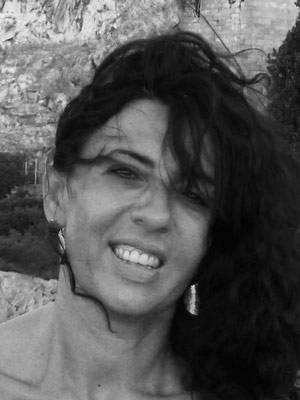 Cinzia Canneri is a photojournalist based in Italy and she has specialized in stories about the human condition, social change, gender and immigration issues. Working extensively in the Horn of Africa, she has photographed the condition of women from a political, social and cultural point of view. She has been published in international magazines such as New York Times, Days Japan, 6mois, L’OBS, XL Semanal, Aftenposten Innsikt, Mind, Open Migration and Washington Post. Her project “Like Two Wings” won an award of excellence in category Science & Natural History Picture, POY 2017 and her project “Women’s Body as Battlefield’ won the first place in the category Issue Reporting Picture Story, POY 2022. Canneri obtained her Master in Photojournalism at WSP in Rome and studied photography at the Fondazione Marangoni school in Florence. She has a degree in Psychology and she worked for many years in a Department of Mental Health. This has allowed her to develop communication and relational skills which are important also in her work as a photographer.
Cinzia Canneri is a photojournalist based in Italy and she has specialized in stories about the human condition, social change, gender and immigration issues. Working extensively in the Horn of Africa, she has photographed the condition of women from a political, social and cultural point of view. She has been published in international magazines such as New York Times, Days Japan, 6mois, L’OBS, XL Semanal, Aftenposten Innsikt, Mind, Open Migration and Washington Post. Her project “Like Two Wings” won an award of excellence in category Science & Natural History Picture, POY 2017 and her project “Women’s Body as Battlefield’ won the first place in the category Issue Reporting Picture Story, POY 2022. Canneri obtained her Master in Photojournalism at WSP in Rome and studied photography at the Fondazione Marangoni school in Florence. She has a degree in Psychology and she worked for many years in a Department of Mental Health. This has allowed her to develop communication and relational skills which are important also in her work as a photographer.
Honorable Mentions are awarded to:
Rasha Al Jundi
Colonial Legacy in Maasai Land
Kenya
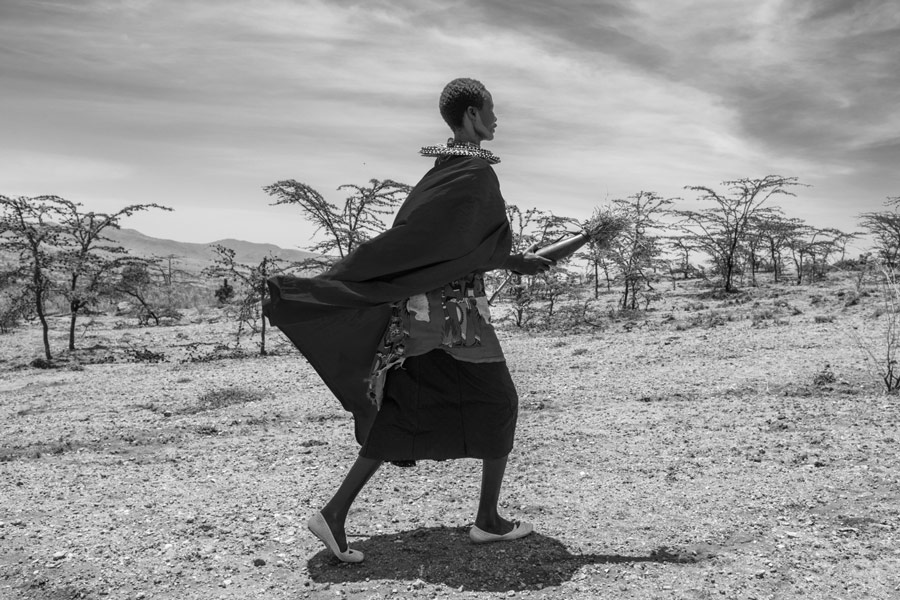
Jacinta Legei, 44, advances the women's traditional praying group in the dry Dol Dol landscape. The prayer ceremony is held for rain amid the ongoing drought. It usually lasts for four days. The people in this area have not had good rains for the past three to four years. The landscape is dry and its full of invasive cacti species. This combination leads to increased deaths among their livestock. Consequently, poverty is widespread. Dol Dol, Laikipia county, Kenya (February 2022).
This is a story that spans generations.
About the man in a redshuka, and the woman with a beaded necklace.
Indigenous peoples, once mighty, controlling territories that spanned borders.
A tribe, rich with traditions, culture, knowledge and history.
Uprooted, fragmented and fenced off from their ancestral lands.
A historical injustice with contemporary consequences.
The Maasai, of Laikipia county, live in a state of negative peace.
Colonizers pushed them away from the red soil of the Rift Valley, into confined reserves.
Present day governance trades with their lands and grievances.
Fortress conservation, drought and bouts of conflict surround them. Prejudice mutes their voices.
Peace, without justice, is present. The threat to their way of life is real.
Yet, they are here, holding us witness to their story.
One of perseverance, adaptability and courage.
That of the man in a redshuka and the woman with a beaded necklace.
Honorable Mention for Systemic Change
Antonio Denti
The Longest Way Home
Vatican City and Canada
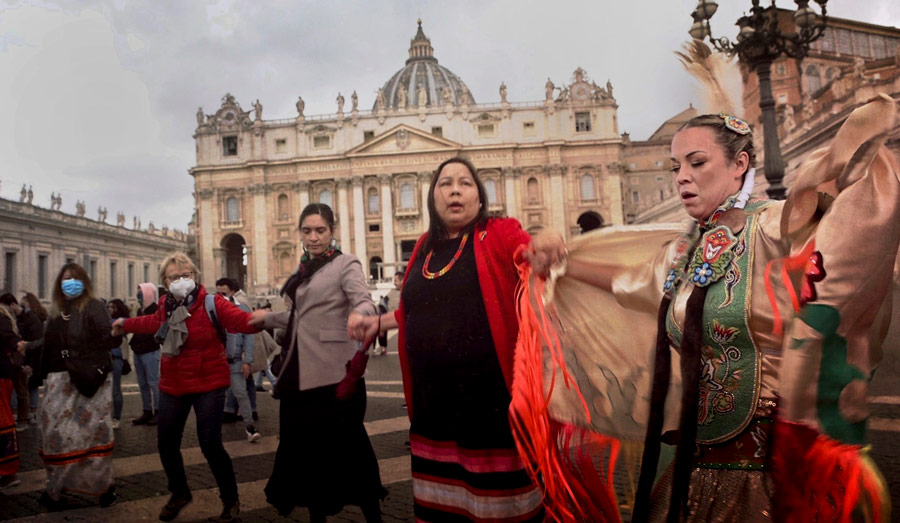
This is a story of deep survival. It is also the story of the beginning of a possible, if difficult, reconciliation. But, most of all, it is the story of an apology. It is a quiet apology here, in this age of loud bangs and turmoil, that could trigger systemic change. Not great scientific innovations or momentous revolutions, but three, simple words: “I am sorry”.
In April 2022, it was quite something to see Indigenous Canadians, proud in their costumes, under Bernini's colonnade at the Vatican waiting to meet the Pope. When the impressive monument was being built in 1600, their colonial catastrophe was starting. It was also quite something only a few months later to see the aging Pope, in deep pain for a troubled knee, travelling to Canada's desolate plains, to the Arctic frontier, to the sacred lakes, to the ancestral lands to say: “I am sorry”. Systemic change may have started then as the beginning of a difficult path of reconciliation in the scarred lands. But a revolution in human ways to deal with the upheavals of history.
Nyani Quarmyne
Connecting the Caucasus
Georgia
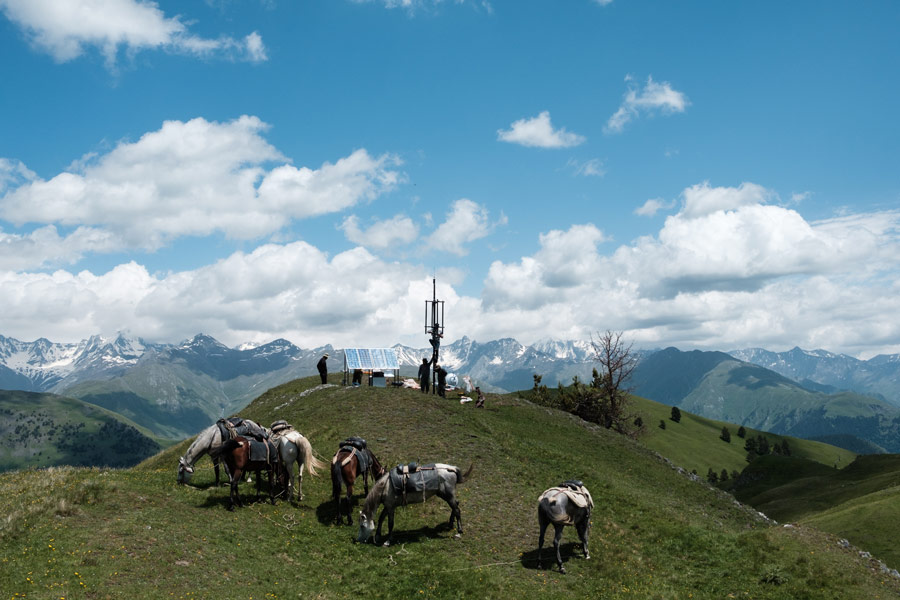
Lasha Tunauri (left) and his packhorses wait while his comrades complete construction of a tower on Kheki, a mountain peak in Tusheti, a beautiful but very remote region of the Greater Caucasus Mountains in the Republic of Georgia. The tower was part of a solar-powered wireless network to bring broadband Internet access to Tusheti.
Tusheti, draped across the Caucasus Mountains in Georgia, is all but cut off for most of the year—the only road in, through the treacherous Abano Pass, is impassable in winter. An occasional Border Police helicopter becomes the only link with the outside world. The region is the ancestral home of the Tush, traditionally nomadic shepherds. Today, due largely to Soviet era resettlement policies, most live in the lowlands; few brave winter in the mountains.
But when the Abano Pass opens in spring, Tush flood into the highlands, shepherds among them making a ten-day trek with their flocks. There is a sense that for most Tush, the mountains are their real home. Tourism has become the economic mainstay: seasonal guesthouses cater to summer hikers. But they are constrained by the very remoteness that is their main attraction.
Aiming to boost tourism by getting businesses online, a group of volunteers set out to bring the Internet to the mountains. They hope increased economic opportunity will slow the drift of young people to cities, and make it possible for the Tush to once again live year-round in the mountains.
Jean Ross
Displaced
Georgia
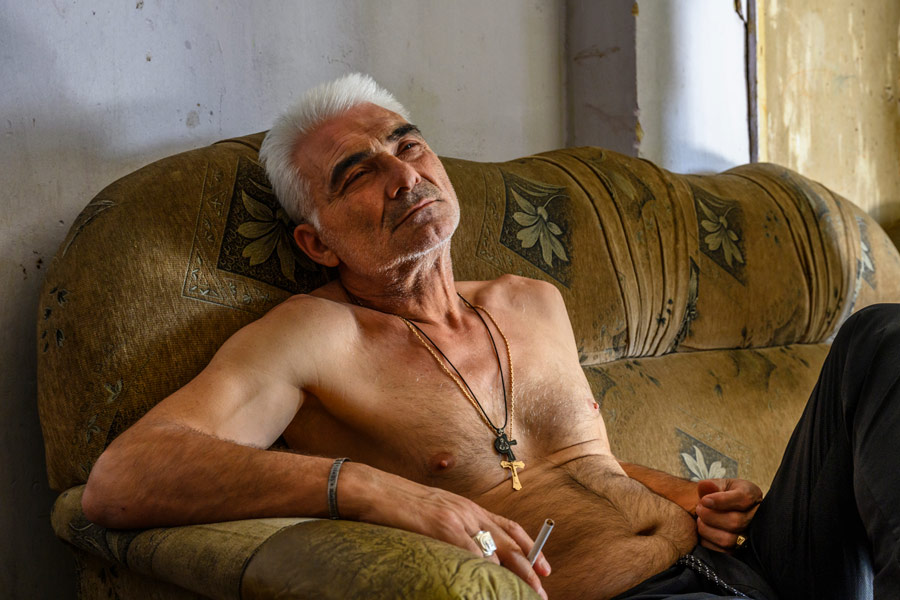
Karti
Long before the invasion of Ukraine, Russian military forces intervened in multiple wars in Georgia; first in Abkhazia in the early 1990s and later in South Ossetia. Roughly a quarter of a million people, mostly ethnic Georgians, were displaced during the conflicts. While many remained in the areas bordering the conflict zones, others relocated to Tbilisi and other cities, often living in large congregate housing complexes. Continued hostility, exacerbated by ongoing Russian presence, has dimmed displaced families’ dreams of returning home. These images and the stories that go with them document their multi-decade struggle for social and economic integration. They also explore broader questions regarding the treatment of civilians displaced by armed conflict broadly and the specific humanitarian toll of Russia’s wars against its neighbors.
Mustafa Bilge Satkin
Drowned History
Turkey
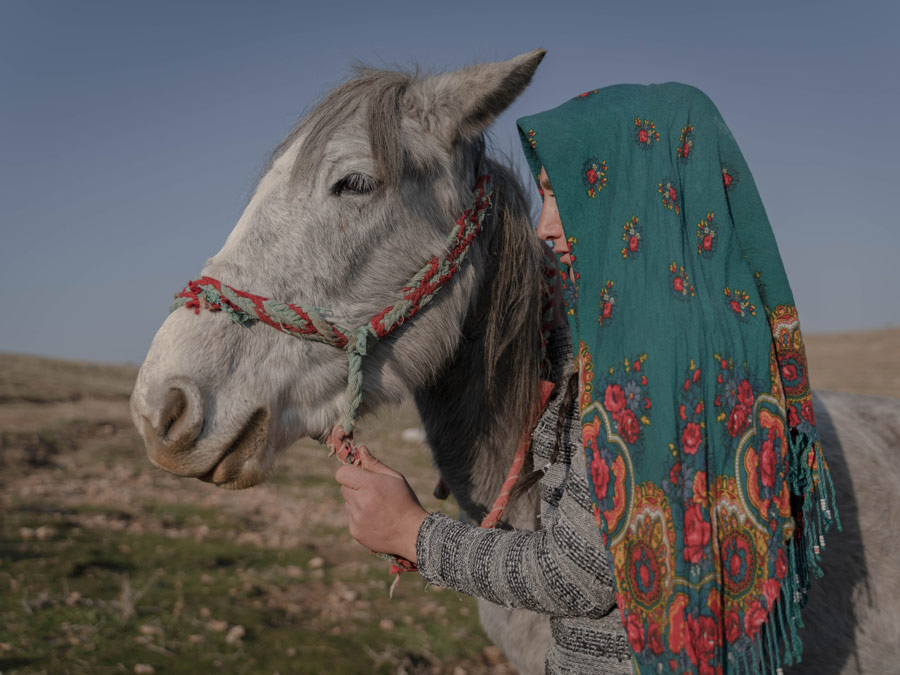
Elif is engaged in animal husbandry. Due to the overheating of water that has become stagnant, his family is considering giving up livestock and emigrating to the city. Many families cannot get enough efficiency from agriculture and animal husbandry due to the negative conditions created by the dam.
The construction of the Ilısu Dam in Turkey had devastating impacts on the local community and environment in the Dicle Valley, a 100 km-long area along the Tigris River. The project resulted in the displacement of over 10,000 people, most of whom are Kurdish and Arabic, and the submergence of 198 villages, including the ancient city of Hasankeyf, one of the world's oldest continuously inhabited settlements.
Despite this, the dam was constructed as part of the state's water policies, with little regard for the consequences it would have on the local community and environment. The inhabitants of villages were forced to abandon their ancestral homes, sell their livestock, and move to a hastily built new town. The process of moving was emotionally distressing, as people had to exhume the graves of their loved ones and carry their remains to the new town so future generations could visit their ancestors.
Michael Snyder
The Queens of Queen City
Maryland, US
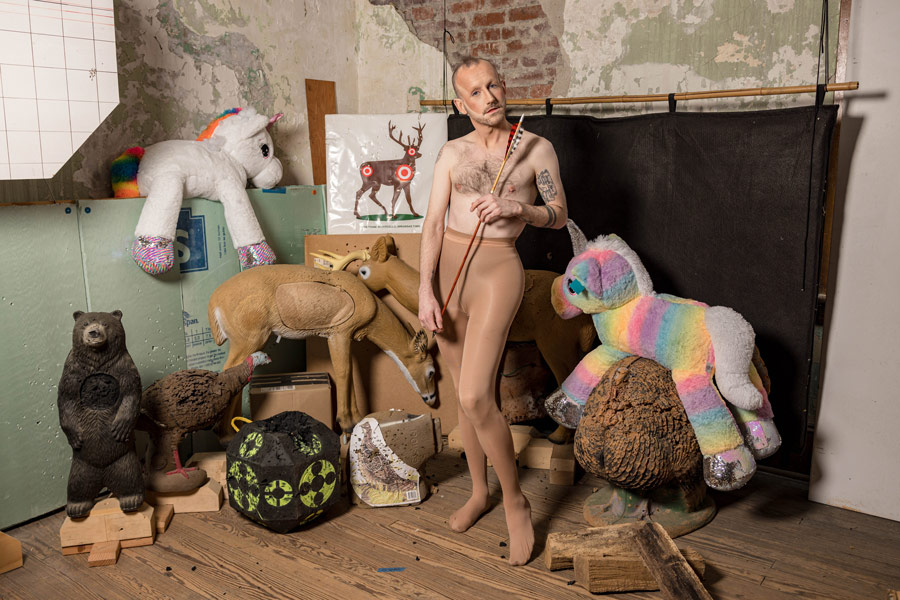
French Silk poses in a practice bow hunting range on an unoccupied floor of a commercial building near Cumberland. “This place is as country as it gets. Pretty much everyone that I knew growing up went hunting. It never seemed like the kind of place where different sexual identities and things like drag could ever exist. It still blows my mind that this is happening here. But I am proud that it is. I am proud to be a part of this.”
America is, by admission of most of its political leaders, a nation shaped by deeply held religious beliefs and cultural values. And perhaps nowhere is this truer than in Appalachia, a mountainous swath of America’s eastern midsection, known for its Rust Belt work ethic and its Bible Belt conservatism. Here, Cumberland, Maryland was once the “Queen City”, a hub of industry and culture. But the story of Cumberland has paralleled that of many once-great cities throughout the Appalachian region: the gradual departure of industry and, with it, a slow descent into economic stagnation and cultural decline.
But even here, flowers are growing in the cracked pavement: a queer community has banded together, created a thriving drag scene, and—against all odds—built the largest Pride movement in the region. The “Queens of Queen City” is a documentary project exploring the courage, risks, and repercussions of openly expressing LGBTQ identities in rural, conservative America. The project charts the course of this queer community over five years as they struggle with loss, bigotry, and acts of arson, to build an inclusive, vibrant community.
Jurors
Barbara Ayotte: SDN Communications Director and Board member, and Senior Director of Strategic Communications at GBH
Greig Cranna: Director, Bridge Gallery, Cambridge, Massachusetts
Donny Bajohr: Associate Photo Editor, Smithsonian magazine
Lisa DuBois: Independent photographer and curator, SDN Board member
Anne Farrar: Assistant Managing Editor, National Geographic magazine
Avi Gupta: Director of Photography, U.S. News and World Report
John Heffernan: President, Foundation for Systemic Change, SDN Board member
Michael Itkoff: Cofounder, Daylight Books
Danny R. Peralta: Executive Director, En Foco
Eli Reed: Member of Magnum Photos and a member of Magnum’s Board of Directors